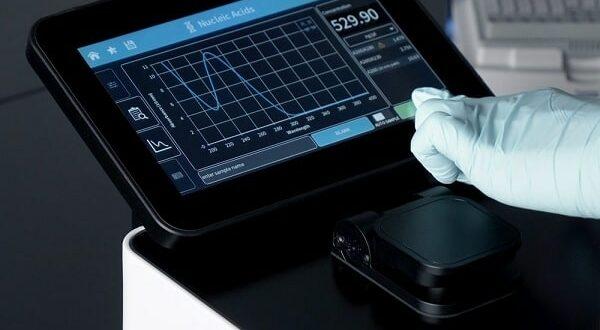In the world of molecular biology and biotechnology, precision is paramount. Accurate measurement of nucleic acids and proteins is crucial for a wide range of applications, from basic research to clinical diagnostics. This is where nanoscale spectrophotometry and instruments like NanoPhotometers come into play. In this article, we will delve into the fascinating world of nanoscale spectrophotometry and explore the indispensable role that NanoPhotometers play in scientific advancements.
The Need For Precision
Before we dive into the specifics of NanoPhotometers, let’s understand why precision in molecular analysis is so critical. In the realm of genomics, proteomics, and other molecular sciences, researchers routinely work with DNA, RNA, and proteins, which are the building blocks of life. Accurate quantification and characterization of these molecules are essential for various applications, including:
Sequencing: In DNA sequencing, the correct quantification of DNA is crucial to ensure that the right amount of sample is used, leading to reliable results. In recent years, NanoPhotometers have emerged as the go-to nanoscale spectrophotometry solution, often considered a superior nanodrop alternative for their enhanced sensitivity and versatility.
Gene Expression Analysis: Researchers studying gene expression levels rely on accurate quantification of RNA to gain insights into cellular processes.
Protein Research: For protein purification, quantification, and structural analysis, precise measurement of protein concentration is vital.
Quality Control: In the pharmaceutical and biotechnology industries, product quality control requires accurate measurement of nucleic acids and proteins to meet regulatory standards.
Diagnostic Testing: Clinical laboratories rely on precise quantification of nucleic acids for disease diagnosis and monitoring.
Nanoscale Spectrophotometry: The Basics
Traditional spectrophotometers are widely used for measuring the absorbance of samples at specific wavelengths of light. They work on the principle that molecules absorb light at characteristic wavelengths, allowing researchers to quantify their concentration. However, when dealing with small sample volumes or low concentrations, traditional spectrophotometers often fall short in terms of accuracy and sensitivity.
Nanoscale spectrophotometry, on the other hand, is designed to address these limitations. It allows scientists to analyze samples with minimal volume requirements, typically in the microliter to nanoliter range. The key to nanoscale spectrophotometry is the use of specialized instruments like NanoPhotometers, which are optimized for this level of precision.
NanoPhotometers: A Closer Look
NanoPhotometers are advanced spectrophotometers designed specifically for nanoscale applications. They offer several key advantages over traditional spectrophotometers:
- Minimal Sample Volume:
NanoPhotometers require extremely small sample volumes, as low as 0.5 µL in some cases. This is a game-changer for researchers working with precious or limited samples.
- High Sensitivity:
NanoPhotometers are highly sensitive and capable of detecting even trace amounts of nucleic acids and proteins. This sensitivity is essential when working with low-concentration samples.
- Wide Dynamic Range:
These instruments can accurately measure a wide range of concentrations, from picograms to micrograms per microliter, without the need for sample dilution.
- Speed And Efficiency:
NanoPhotometers provide rapid results, allowing researchers to streamline their workflows and save valuable time.
- Versatility:
They are versatile tools capable of measuring not only nucleic acids and proteins but also other biomolecules like enzymes and antibodies.
- User-Friendly Interface:
Most NanoPhotometers come with user-friendly software that simplifies data analysis and ensures reproducibility.
Applications Of NanoPhotometers
NanoPhotometers find applications in various fields of science and research:
- Genomics:
In genomics research, NanoPhotometers are used for DNA and RNA quantification, purity assessment, and sample quality control. This is crucial for applications like PCR, sequencing, and gene expression analysis.
- Proteomics:
Protein quantification and purity assessment are essential in proteomics. NanoPhotometers enable accurate protein concentration determination for downstream experiments.
- Drug Discovery And Development:
Pharmaceutical companies use NanoPhotometers for quality control during drug development, ensuring that the drug substance meets regulatory standards.
- Clinical Diagnostics:
In clinical laboratories, NanoPhotometers are indispensable for the accurate measurement of nucleic acids in diagnostic tests, such as those used in infectious disease detection and genetic screening.
- Nanoparticle Characterization:
NanoPhotometers are also used to characterize nanoparticles, making them valuable tools in nanotechnology research.
Conclusion
Nanoscale spectrophotometry, facilitated by instruments like NanoPhotometers, has transformed the way researchers approach molecular analysis. Their ability to work with minimal sample volumes while maintaining high sensitivity and accuracy makes them indispensable in various scientific fields.
As science continues to advance, the demand for precision in molecular analysis will only grow. NanoPhotometers, with their remarkable capabilities, will continue to play a pivotal role in enabling groundbreaking discoveries and innovations, ensuring that researchers can unlock the secrets of life with the utmost precision and confidence.
 Wiki Techno Bestes Tech-News-Magazin-Portal
Wiki Techno Bestes Tech-News-Magazin-Portal




